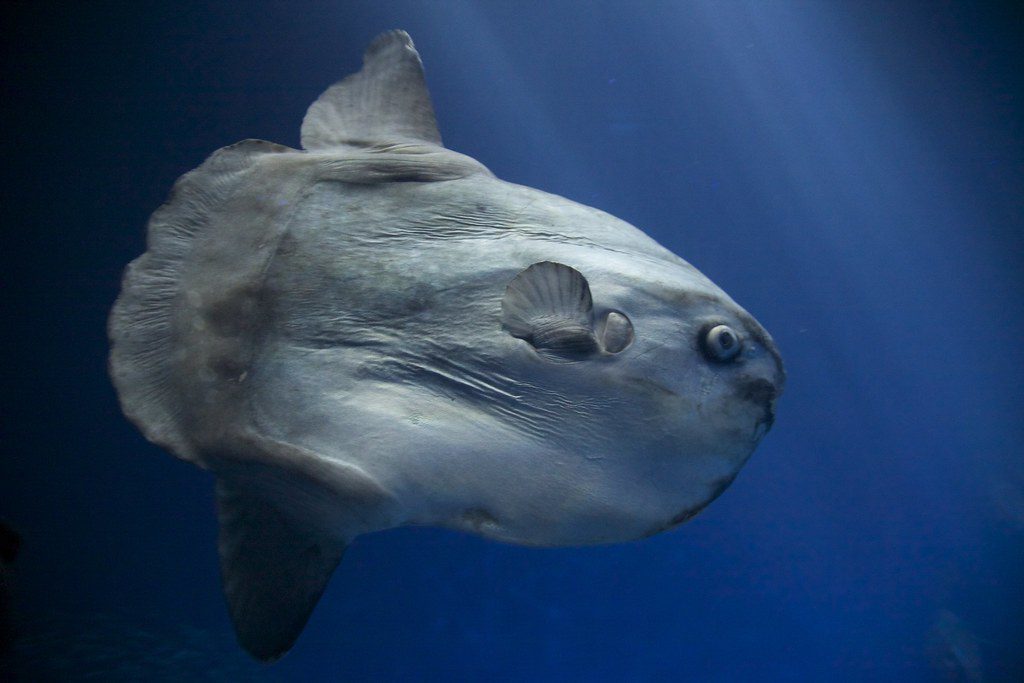Since time immemorial, the genesis of planet Earth has sparked countless debates, and despite the passage of epochs, a unanimous verdict seems far off. Yet, amid these deliberations, a consensus emerges: our world is a canvas of unparalleled creativity, teeming with a kaleidoscope of awe-inspiring marvels. Among these myriad wonders swims a distinct exemplar of nature’s originality—the Mola mola fish or the Ocean sunfish.
The oceans contain their fair share of mysterious species, but undoubtedly a firm favorite ranking high in the bizarre category is a species commonly known as the Ocean sunfish (the Mola mola). Mola is an unusual species of vertebrate that frequent warm temperate waters around the globe. Although Mola mola fish are primarily famous for being the largest bony fish species in the ocean, further investigation shows that, factually, this is the least interesting thing about these Osteichthyes.
Named after their body’s resemblance to a millstone, the Latin word mola describes the shape, color, and texture of the fish expressively. The peculiarity of the adult’s body form is second only to that of its offspring—the juvenile sunfish closely resemble their puffer fish relatives, with their body emulating a translucent star shape. Over time, the spines disappear, and their low vertebrae-to-body size ratio contributes to the strangeness of the mola’s flat wheel-shaped adult form. With approximately 300 million eggs laid per birth, the mola is considered the highest-ranking vertebrate reproducer on the planet.
Locomotion is undoubtedly one of the strangest characteristics possessed by the mola, which relies on a single dorsal and anal fin for lopsided wing-like propulsion, with the undersized tail or clavus acting as a steering rudder. Highly peculiar but evidently evolutionarily efficient.
Like many other marine creatures, the mola is faced with a number of conservation issues that threaten the survival of the species. Increased levels of fisheries bycatch, and incidental marine pollution ingestion have been the main factors contributing to the demise of the species. If undisturbed by these factors, mola have been recorded to grow to a whopping 2,268 kg (5,000 lbs), spanning almost 9 feet (2.74 m).
Along with their grotesque outward appearance, the mola seems to have drawn the short evolutionary straw internally as well, with the species having been recorded as a host for over 50 species of parasite. Parasitic infestation on the surface of the mola’s skin is thought to be one of the main reasons for the species’ extended time near the surface. Here, seabirds have been recorded assisting the Mola mola fish with pest control—a symbiotic relationship resulting in a nice meal for the birds and a clearer complexion for the mola.
Standing as a testament to evolution’s whims and wonders, the Mola Mola, or Ocean Sunfish, illuminates the astounding diversity of life on our planet. With its peculiar form and unusual lifestyle, it challenges our notions of what’s considered ‘normal’ in the animal kingdom. It’s a compelling reminder of nature’s boundless creativity, a silent testament to the multitude of ways life can adapt and thrive. The Mola Mola doesn’t just represent the weird and wonderful—it symbolizes the inherent beauty and infinite complexity that our Earth nurtures.


